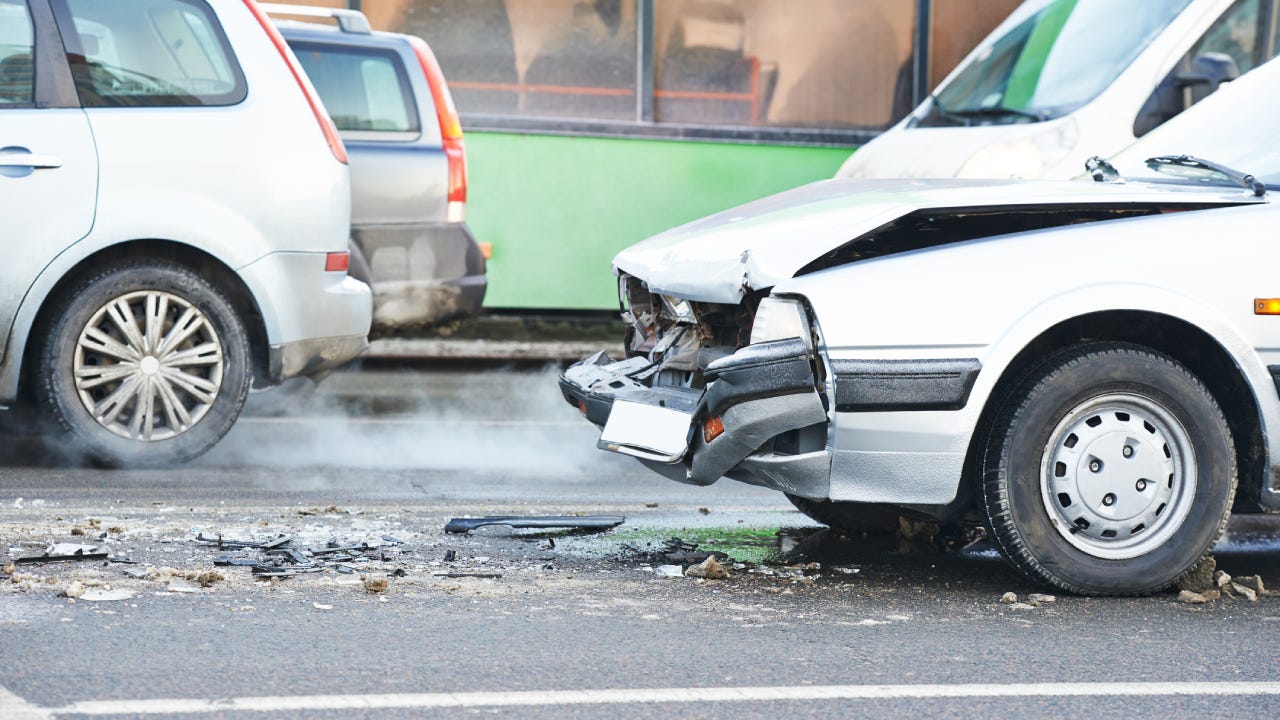Car insurance after a hit-and-run in Tennessee

Tennessee hit-and-run laws require that anyone involved in an accident stay at the scene of the incident and provide their information. Failure to do so can carry significant fines and penalties. If you were involved in a hit-and-run accident in Tennessee, find out what steps to take and whether or not your car insurance will help repair the damage.
Hit-and-runs in Tennessee
A hit-and-run incident is when a driver collides with another vehicle, property or individual and then fails to remain at the scene to share their details.
Car insurance laws in Tennessee require car insurance providers to offer uninsured motorist bodily injury coverage (UMBI) and uninsured motorist property damage (UMPD) coverage to all policyholders. UMBI can help pay for medical-related expenses for you and your passengers, and UMPD can help repair your vehicle in the event of a covered claim. Both coverage types may apply when an at-fault driver hits you and is uninsured or unable to be identified.
Policyholders can choose to reject this coverage in writing. In the event of an accident with an uninsured or unidentified driver, you would need to rely on another optional coverage called medical payments. If you make collision coverage part of your auto policy, vehicle damage caused by a hit-and-run will usually be covered up the the actual cash value of your car, minus the deductible.
If you don’t have these types of coverage, however, you could be responsible for paying any out-of-pocket costs for medical bills or vehicle repairs if you are the victim of a hit and run in Tennessee. Most insurance experts recommend that drivers carry higher liability limits for better financial protection whenever possible.
Hit-and-run laws in Tennessee
According to Tennessee accident laws, if you cause an accident with injuries or death of another person in a public area — near a shopping center, apartment complexes or on highways — you must stop at or as close to the scene as possible, provide your information and render aid. The information you must be prepared to provide includes your name, address, vehicle registration number and insurance information. Rendering aid means you must provide reasonable assistance, including calling an ambulance to assist the victim.
Additional important laws include:
- If it is suspected that property damage of $1,500 or more has occurred, the driver is required to notify the police about the accident.
- Failure to stop and provide your information to the impacted party or property owner could result in a Class A misdemeanor, fines up to $2,500, up to 11 months and 29 days in jail and driver’s license suspension.
- A Class E felony may result if you fail to stop despite reasonable belief that the accident resulted in death and could be punishable by up to six years in jail and potentially having your driver’s license revoked.
If you are involved in a hit-and-run in Tennessee and get a ticket for leaving the scene, you could face higher insurance rates, a canceled policy or be required to carry high-risk car insurance.
How does a hit-and-run affect car insurance in Tennessee
In Tennessee, a hit-and-run accident can impact your car insurance rates. If you’ve been the victim of a hit-and-run incident and were not at fault for the accident, you shouldn’t see any significant rate changes to your policy, even if you used your UMBI and UMPD coverage. However, keep in mind that UMPD has a required deductible of $200 in Tennessee.
While UMBI and medical payments do not have deductibles, collision coverage does. Some of the most popular collision deductibles are $500 or $1,000, and you will need to pay for that expense out-of-pocket to have your vehicle repaired when filing a collision claim.
If you are the driver leaving the scene of an accident in Tennessee, the cost of your car insurance policy can increase drastically. Aside from being surcharged for an at-fault accident, your rate can also increase for any tickets you may receive concerning the accident, such as speeding or leaving the scene.
Every insurance company has its own underwriting and rating system, and a hit-and-run accident may be rated more heavily by one company than another. To give you an example of how an at-fault accident may impact your car insurance rates in Tennessee, the average cost of full coverage car insurance is $1,897 per year. After an at-fault accident, the rate jumps up to $2,730 — a 44 percent increase. Rates following a hit-and-run are likely to be even higher as these incidents are considered higher risk than standard accidents. If you experience high rates after a hit-and-run, comparing car insurance rates between multiple carriers may help you find a cheaper rate.
What to do after a hit and run in Tennessee
If you cause an accident, no matter how minor, it is best to stop as close as possible to the scene to provide your insurance information and render aid if needed to avoid being charged with a hit and run.
But with a high rate of uninsured drivers in Tennessee, you may become a victim of a hit and run at some point. If you are the victim of a hit and run in Tennessee, follow these steps:
- Stop the car: If another driver has hit you, stop as close to the scene as is safe to do so.
- Assess the scene: If your car is driveable and in the roadway, move to the shoulder near the accident scene. If the car is not driveable, get out of the car if you are not injured and wait nearby to avoid being involved in another accident, especially if you are traveling a busy road.
- Call for help: Make sure you and your passengers are okay, and call the police, especially if the at-fault driver has left the scene, creating a hit-and-run scenario. If someone is injured, notify the police that an ambulance is also needed at the scene.
- Document what happened: While it is still fresh, detail the weather conditions, the location where the accident occurred and any other details you can remember. Take photos of your car from all angles.
- Contact your car insurance company: Even if the other person involved or responsible for the accident leaves the scene, you should contact your insurance company to file a claim and make them aware of the situation. Provide as much detail as you can to your insurance provider. If you have collision coverage or uninsured motorist coverage, you may be able to file a claim to help pay for damage or injuries.
Frequently asked questions
Methodology
Bankrate utilizes Quadrant Information Services to analyze April 2024 rates for all ZIP codes and carriers in all 50 states and Washington, D.C. Rates are weighted based on the population density in each geographic region. Quoted rates are based on a single, 40-year-old male and female driver with a clean driving record, good credit and the following full coverage limits:
- $100,000 bodily injury liability per person
- $300,000 bodily injury liability per accident
- $50,000 property damage liability per accident
- $100,000 uninsured motorist bodily injury per person
- $300,000 uninsured motorist bodily injury per accident
- $500 collision deductible
- $500 comprehensive deductible
To determine minimum coverage limits, Bankrate used minimum coverage that meets each state’s requirements. Our base profile drivers own a 2022 Toyota Camry, commute five days a week and drive 12,000 miles annually.
These are sample rates and should only be used for comparative purposes.
Incidents: Rates were calculated by evaluating our base profile with the following incidents applied: clean record (base) and at-fault accident.






